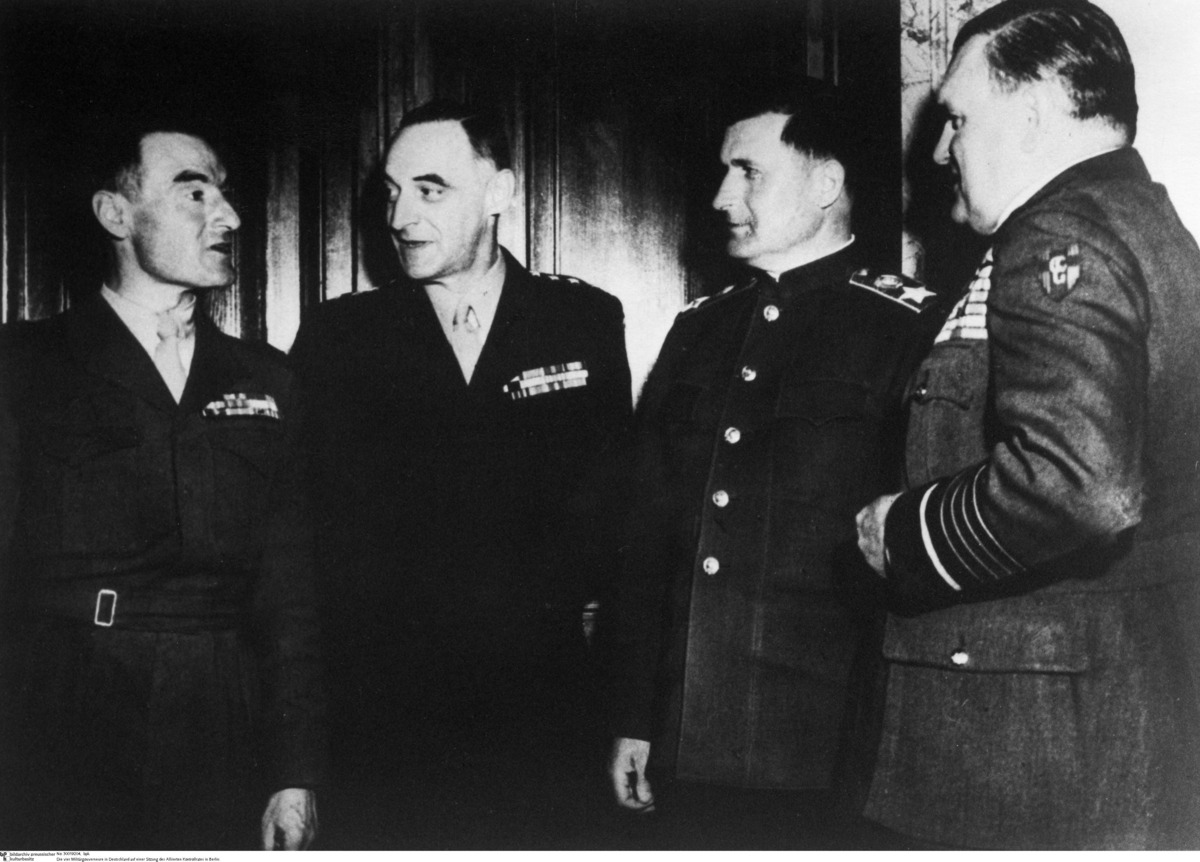Abstract
The quadripartite Allied Control Council began to meet informally on
July 30, 1945; it officially commenced its work as the supreme
governmental, supervisory, and administrative body in Germany a month
later, on August 30, 1945. It consisted of the four supreme commanders
of the occupying armies; these men also doubled as the military
governors of their respective zones. In light of the Allies’ differing
interests and divergent conceptions of the new order in Germany, they
eventually decided to give administrative sovereignty to each individual
zone. Treating Germany “as a whole” would have been difficult,
especially since all Council decisions had to be unanimous. Moreover,
general tensions stemming from the East-West conflict were coming to a
head at that point, limiting both the Allies’ room and desire for
compromise with each other. After the Soviet military governor, Marshal
Vasily Sokolovski (second from right), walked out of the Council on
March 20, 1948, to protest the prospect of the founding of a West German
state, the Allied Control Council discontinued its work. Alongside
Sokolovski, we see Military Governor William S. Douglas (Great Britain,
at right), Military Governor Lucius D. Clay (USA, second from left), and
Deputy Military Governor Charles Jean Roger Noiret (France, at
left).
